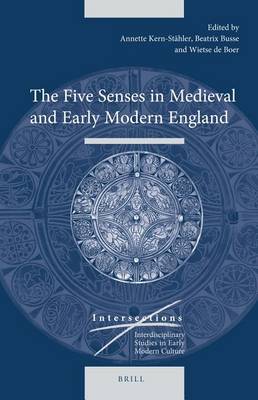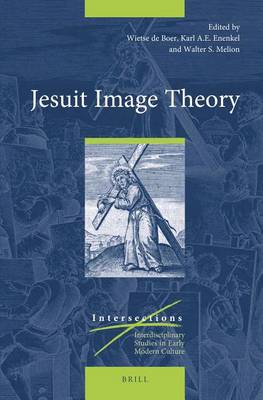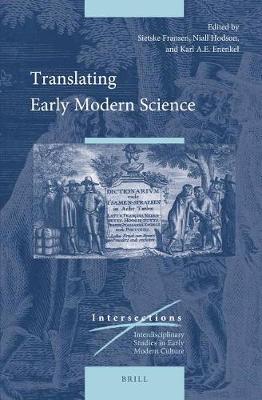Intersections
4 primary works • 6 total works
Book 34
Anthropomorphism - the projection of the human form onto the every aspect of the world - closely relates to early modern notions of analogy and microcosm. What had been construed in Antiquity as a ready metaphor for the order of creation was reworked into a complex system relating the human body to the body of the world. Numerous books and images - cosmological diagrams, illustrated treatises of botany and zoology, maps, alphabets, collections of ornaments, architectural essays - are entirely constructed on the anthropomorphic analogy. Exploring the complexities inherent in such work, the interdisciplinary essays in this volume address how the anthropomorphic model is fraught with contradictions and tensions, between magical and rational, speculative and practical thought.
Contributors include Pamela Brekka, Anne-Laure van Bruaene, Ralph Dekoninck, Agnes Guiderdoni, Christopher P. Heuer, Sarah Kyle, Walter S. Melion, Christina Normore, Elizabeth Petcu, Bertrand Prevost, Bret Rothstein, Paul Smith, Miya Tokumitsu, Michel Weemans, and Elke Werner.
Contributors include Pamela Brekka, Anne-Laure van Bruaene, Ralph Dekoninck, Agnes Guiderdoni, Christopher P. Heuer, Sarah Kyle, Walter S. Melion, Christina Normore, Elizabeth Petcu, Bertrand Prevost, Bret Rothstein, Paul Smith, Miya Tokumitsu, Michel Weemans, and Elke Werner.
Book 44
The Five Senses in Medieval and Early Modern England
by Annette Kern-Stahler, Beatrix Busse, and Wietse Boer
Published 2 May 2016
The essays collected in The Five Senses in Medieval and Early Modern England examine the interrelationships between sense perception and secular and Christian cultures in England from the medieval into the early modern periods. They address canonical texts and writers in the fields of poetry, drama, homiletics, martyrology and early scientific writing, and they espouse methods associated with the fields of corpus linguistics, disability studies, translation studies, art history and archaeology, as well as approaches derived from traditional literary studies.
Together, these papers constitute a major contribution to the growing field of sensorial research that will be of interest to historians of perception and cognition as well as to historians with more generalist interests in medieval and early modern England.
Contributors include: Dieter Bitterli, Beatrix Busse, Rory Critten, Javier Diaz-Vera, Tobias Gabel, Jens Martin Gurr, Katherine Hindley, Farah Karim-Cooper, Annette Kern-Stahler, Richard Newhauser, Sean Otto, Virginia Richter, Elizabeth Robertson, and Kathrin Scheuchzer
Together, these papers constitute a major contribution to the growing field of sensorial research that will be of interest to historians of perception and cognition as well as to historians with more generalist interests in medieval and early modern England.
Contributors include: Dieter Bitterli, Beatrix Busse, Rory Critten, Javier Diaz-Vera, Tobias Gabel, Jens Martin Gurr, Katherine Hindley, Farah Karim-Cooper, Annette Kern-Stahler, Richard Newhauser, Sean Otto, Virginia Richter, Elizabeth Robertson, and Kathrin Scheuchzer
Book 45
This volume investigates how Jesuits reflected visually and verbally on the status and functions of the imago, between the foundation of the order in 1540 and its suppression in 1773, in rhetorical and emblematic treatises, theoretical debates, and embedded in various instances where Jesuit authors and artists implicitely explored the status and functions of images.
Book 52
The Ten Commandments in Medieval and Early Modern Culture
by Youri Desplenter, Jurgen Pieters, and Walter Melion
Published 4 September 2017
Over the course of the fourteenth and fifteenth centuries, as more and more vernacular commentaries on the Decalogue were produced throughout Europe, the moral system of the Ten Commandments gradually became more prominent. The Ten Commandments proved to be a topic from which numerous proponents of pastoral and lay catechesis drew inspiration. Gods commands were discussed and illustrated in sermons and confessors manuals, and they spawned new theological and pastoral treatises both Catholic and Reformed. But the Decalogue also served several authors, including Dante, Petrarch, and Christine de Pizan. Unlike the Seven Deadly Sins, the Ten Commandments supported a more positive image of mankind, one that embraced the human potential for introspection and the conscious choice to follow Gods Law.
Translating Early Modern Science
by Sietske Fransen, Niall Hodson, and Karl A E Enenkel
Published 15 September 2017





